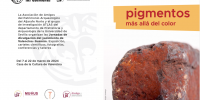We publish a new book titled “Making a Mark: Imagery and Process in Neolithic Britain and Ireland” with Oxbow. The book, co-authored by Marta Díaz Guardamino Uribe (University of Durham) and Andrew Meirion Jones (University of Southampton), publishes the outcomes of a research project with the same title funded by the Leverhulme Trust.
The project revised more than a thousand decorated artefacts from Neolithic Britain and Ireland through the application of computational photographic techniques. Our aim was to examine the practices of decorating artefacts from a processual and relational perspective.

